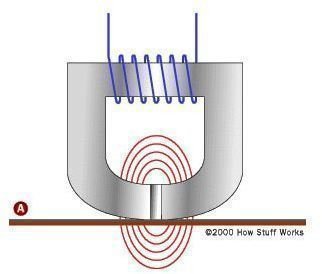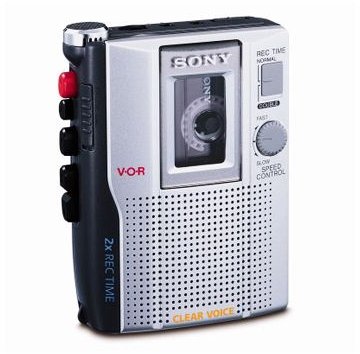How Tape Recorders Work
Today’s world grows increasingly dependent on technology as the electronic age progresses. Many technological advances have taken place throughout the electronic age and each with the purpose of easing the way of life- whether it is communication, transportation, or construction.
One such breakthrough is the development of the tape recorder. A tape recorder is an audio storing device that utilizes magnetic recording technology to record and play back sound. An electromagnet is a component of magnetic recording and so occupies a critical role in the function of tape recorders. Thus, the main application of the tape recorder is to distribute audio data, particularly in the form of music.
How Electromagnets are used
There are two components to a tape recorder: the recorder itself and the tape which serves as the storage medium. The tape is composed of a thin plastic substance bonded with a coating of ferric oxide powder. This powder is ferromagnetic, which allows for it to become magnetized by a magnetic field. The functionality of the tape recorder revolves around electromagnets, and thus, uses magnetic fields. The tape recorder has a record head, which is a small, circular electromagnet with a little gap in it as shown in Figure 2, composed of an iron core wrapped in wire.

A process of recording and playing back occurs as the tape is spun from one spool to the other. While recording, audio signals in the form of an electric current are sent through the coil of wire and induce a magnetic field in the iron core. Magnetic fluctuation occurs within the gap and produces a fringe pattern. This fluctuation is what magnetizes the oxide-coated tape, and once magnetized, the tape “memorizes” what is recorded. However, during playback, the opposite happens. The motion of the tape back across the head produces a varying magnetic field within the gap, which in turn, produces a fluctuating magnetic field in the coil. As a result, a signal is reproduced in the coil, matching the original sound signals, and is amplified to the speakers.

Impact on Society
Tape recorders today are relatively efficient, inexpensive, and durable. Their benefit extends to those who desire to listen to anything that is in an audio format, whether it is music, or a book, especially for the visually impaired. The extent of the benefit, therefore, is only to the individual. Unfortunately, the risk involved with the use of tape recorders is environmental degradation. Much waste accumulates in the environment as a result of thrown out tapes. The tape itself does not decompose easily, and so becomes detrimental to the environment and wildlife.
